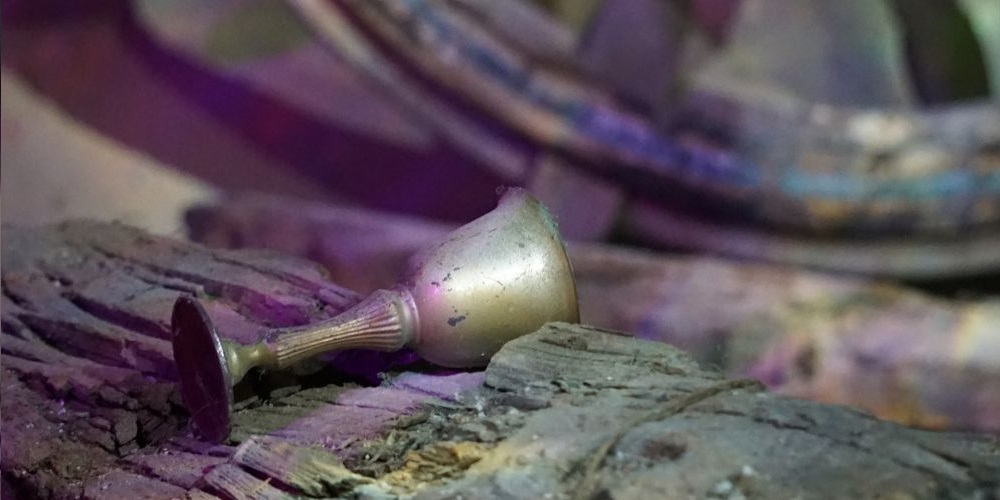Wreck the environment
The traumatic event of a sinking ship has a lasting impact on the ocean and marine life. But is this impact for the better, or for worse?

For World Ocean Day, we’ve been looking at the ecology of wrecks.
The traumatic event of a ship being wrecked and sinking to the bottom of the ocean leaves a legacy that lasts long after the disaster and often past the point of memory. The remains of these vessels, which once transported people to new beginnings, brought exotic goods from the other side of the world, or waged war in the name of their nation (sometimes even in the name of piracy!), start a second life as a place of refuge and a home to all manner of marine life.
A sunken ship becomes a living, breathing habitat which provides sustainable shelter for many species of marine organisms. The wreck can create its very own ecosystem, with numerous new residents living harmoniously side by side, and become a safe haven from the dangers of predators and destructive fishing practices. Some ships are even intentionally wrecked to create new artificial reefs, such as the Leander-class frigate, HMS Scylla which was scuttled in Whitsand Bay near Plymouth in 2004 and became Europe’s first artificial reef.
However, this only tells one side of the story. Shipwrecks can cast a very dark shadow over the sea that claims them, disasters such as the Torrey Canyon oil spill of 1967 for example, left crude oil washing up on the beaches of Cornwall up to 15 years after the ship had been wrecked, with catastrophic consequences for the environment.
HMS Royal Oak was a Revenge-class battleship, built during the First World War and sunk by a German U-Boat in Scapa Flow at the start of the Second World War in 1939. Royal Oak had over 3,000 tons of fuel on board when the torpedoes hit their target. After decades of corrosion on the seabed, the fuel began to leak into the surrounding waters. When experts surveyed the site to begin the process of extracting the oil, they found that the ship was almost upside down in the water. The fuel itself had risen and moved through corroded compartments to find its way into the most unpredictable of spaces within the ship. To date, over 2,000 tons of fuel have been removed from Royal Oak, however, as much as 783 cubic metres remains within the fragile and degrading wreck.
Potentially even more of a threat to the marine environment is the fate of a Second World War German Submarine, U-864. This vessel sank of the coast of Norway in 1945, becoming the only submarine in history to be sunk by an enemy submarine whilst both were underwater. U-864 was transporting 67 tons of liquid mercury which has begin to spread out over 30,000 square metres of seabed. Not only does this mercury severely threaten the local ecosystem, but it also poses a significant risk to humans. There is a danger of this mercury being eaten by people who buy fish contaminated with the toxic element, but a ban on fishing in the area could be devastated to the large fisheries of the coastal regions of Norway.
So far, since the submarine’s rediscovery in 2003, environmental groups have called for action to be taken. Unfortunately, politics comes into play and with a foreign ship, wrecked at a time of war in Norwegian waters, and agreements on funding a salvage operation that could either stabilise or remove the fragile wreck have come to nothing. A salvage operation was proposed in 2010, but the cost of $153 million was deemed too high. Other solutions, assessed to be more cost-effective have included encasing the submarine in concrete. However, this would be a perfect case of pushing a problem into the future, as eventually this concrete would begin to degrade, and within a few decades, the consequences of kicking the can down the road would be obvious to everybody.
For every picture-perfect shipwreck, lying on the seabed, providing a welcome home for a wonderfully diverse ecosystem, there is a disaster which is waiting to happen. A clock ticking down to an unknown time when materials dangerous and toxic to marine life are to be released, often unknown, into the environment. Many of these wrecks have been willingly forgotten – expensive problems, something nobody needs to see, or know about, somebody else’s concern, maybe in another country or another time.
It is imperative for the health of the world’s oceans that such shipwrecks and their associated problems are not ignored or forgotten under the waves. Left out of sight, and out of mind.
